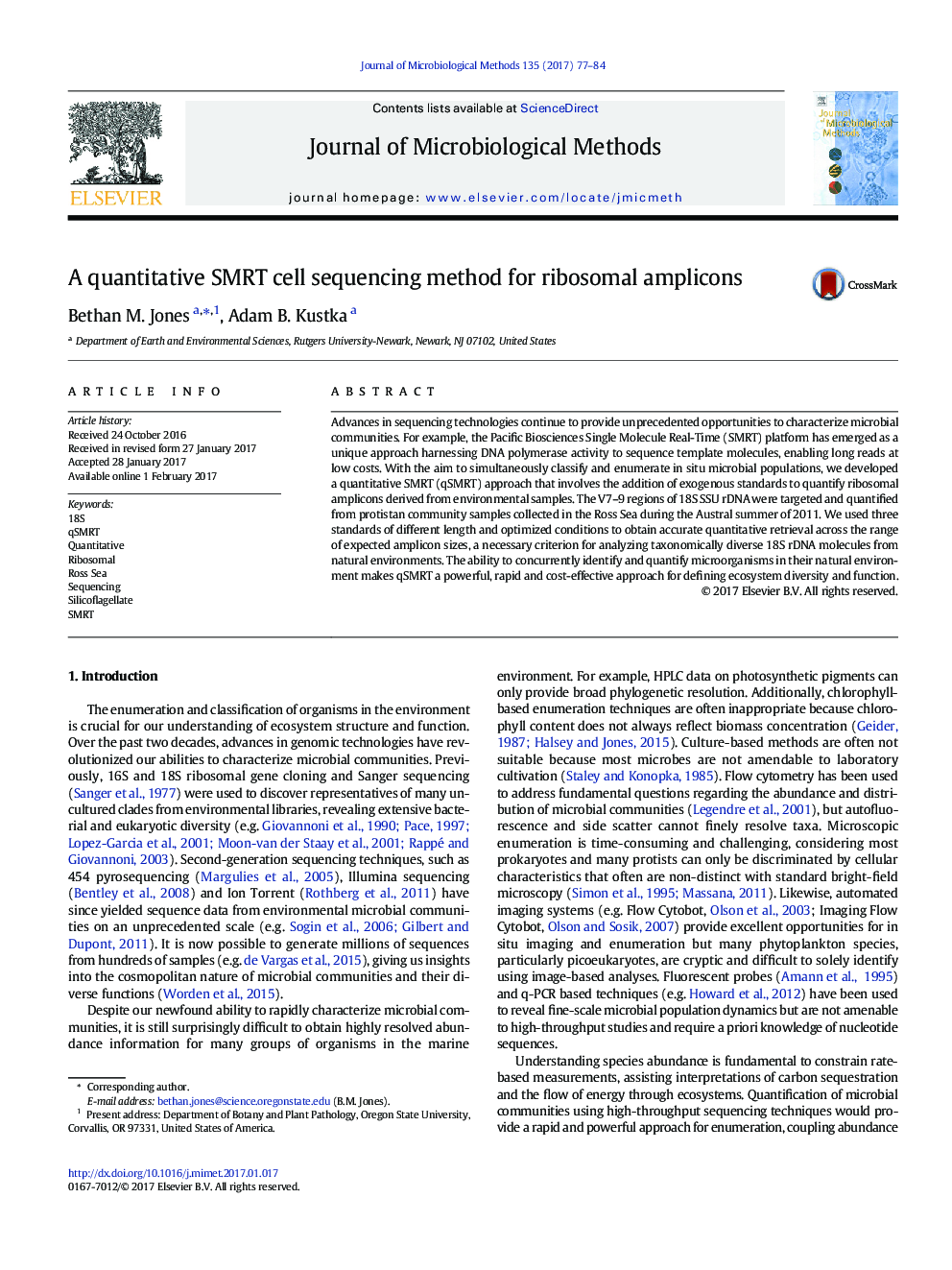| Article ID | Journal | Published Year | Pages | File Type |
|---|---|---|---|---|
| 5522261 | Journal of Microbiological Methods | 2017 | 8 Pages |
â¢Quantification is important for understanding microbial community structure.â¢New method developed to make SMRT amplicon sequencing quantitative (qSMRT).â¢qSMRT was used to enumerate 18S rDNA in environmental samples.â¢qSMRT revealed abundant silicoflagellate 18S rDNA in waters adjoining the Ross Sea.
Advances in sequencing technologies continue to provide unprecedented opportunities to characterize microbial communities. For example, the Pacific Biosciences Single Molecule Real-Time (SMRT) platform has emerged as a unique approach harnessing DNA polymerase activity to sequence template molecules, enabling long reads at low costs. With the aim to simultaneously classify and enumerate in situ microbial populations, we developed a quantitative SMRT (qSMRT) approach that involves the addition of exogenous standards to quantify ribosomal amplicons derived from environmental samples. The V7-9 regions of 18S SSU rDNA were targeted and quantified from protistan community samples collected in the Ross Sea during the Austral summer of 2011. We used three standards of different length and optimized conditions to obtain accurate quantitative retrieval across the range of expected amplicon sizes, a necessary criterion for analyzing taxonomically diverse 18S rDNA molecules from natural environments. The ability to concurrently identify and quantify microorganisms in their natural environment makes qSMRT a powerful, rapid and cost-effective approach for defining ecosystem diversity and function.
Graphical abstractDownload high-res image (145KB)Download full-size image
